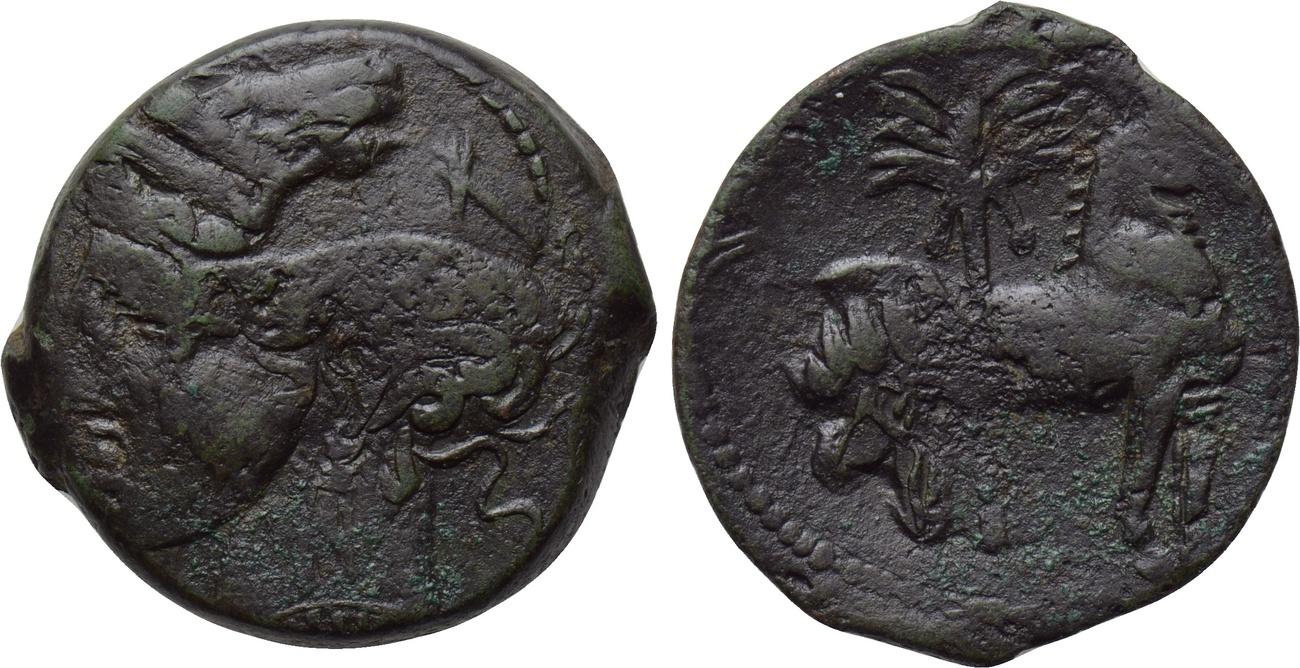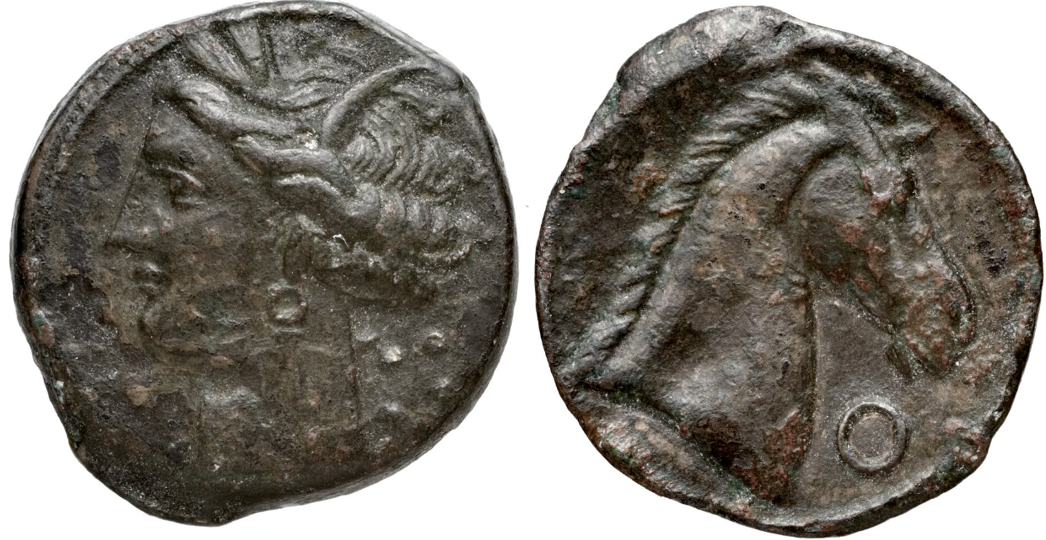SO 222 - Carthage over Carthage
From SILVER
264 BCE - 241 BCE
Location/history
| Sale(s)Sale(s) ᵖ: | Pecunem Auction, EA 37, 01 Nov. 2015, n° 345. | |
Overstriking coin
Description
| ObverseInscription or printing placed on the obverse.: | Head of Tanit left, wearing necklace, earrings and wreath. Border of dots. | ReverseInscription or printing placed on the reverse.: | Horse right. In background, palm tree. Border of dots. |
Mint and issuing power
| MintIdentifies the place of manufacture or issue of a numismatic object.: | Carthage | Ancient regionAncient region. | Zeugitana | Modern countryModern country: Tunisia | AuthorityIdentifies the issuing power. The authority can be "pretended" when the name or the portrait of X is on the coin but he/she was not the issuing power. It can also be "uncertain" when there is no mention of X on the coin but he/she was the issuing power according to the historical sources: | Carthaginian Empire |
Chronology
| FromIdentifies the initial date in a range assigned in a numismatic context. 264 BCE toIdentifies the final date in a range assigned in a numismatic context.. 241 BCE | Hellenistic 323-30 BC |
Physical description
| MetalThe physical material (usually metal) from which an object is made.: Bronze |
WeightWeight of the numismatic object (in grams). in grams: 12.4712.47 g <br />12,470 mg <br /> | DenominationTerm indicating the value of a numismatic object. Examples: tetradrachm, chalkous, denarius.: 2 shekels |
|
References
| Coin referenceReference of the Coin: | Coin series referenceReference to coin series study: | SNG Copenhagen North Africa1SNG Copenhagen North Africa, n° 219, Alexandropoulos 20072Alexandropoulos 2007, n° 44, Sear II3Sear II, n° 6507. |
Overstruck type
Description
| ObverseInscription or printing placed on the obverse.: | Head of Tanit left. | ReverseInscription or printing placed on the reverse.: | Head of horse right. In field, Punic letters (visible on obverse). |
Mint and issuing power
| MintIdentifies the place of manufacture or issue of a numismatic object. ᵖ: | Carthage | Ancient regionAncient region. ᵖ | Zeugitana | Modern countryModern country: Tunisia | AuthorityIdentifies the authority in whose name (explicitly or implicitly) a numismatic object was issued. ᵖ: | Carthaginian Empire |
Chronology
| FromIdentifies the initial date in a range assigned in a numismatic context. toIdentifies the final date in a range assigned in a numismatic context.. | periodTime period of the numismatic object. |
Physical description
References
| Coin type referenceReference to coin series study ᵖ: | Alexandropoulos 20072Alexandropoulos 2007, n° 57 | ||
| Coin series web reference overstruckCoin series web references overstruck: | |||
Additional data
| Frequency of overstrikesFrequency of overstrikes: | Level of confidenceLevel of confidence of the identification: | ||
| RemarksRemarks: | |||

